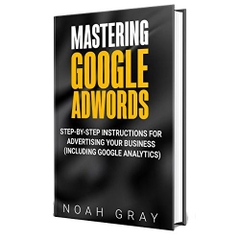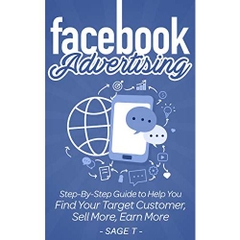-
-
-
Tổng tiền thanh toán:
-
-
Thông tin
-
Tìm sách theo yêu cầu
Book Description
Release date: March 30, 2007 | ISBN-10: 0123740371 | ISBN-13: 978-0123740373 | Edition: 1
Sketching User Experiences approaches design and design thinking as something distinct that needs to be better understood-by both designers and the people with whom they need to work- in order to achieve success with new products and systems. So while the focus is on design, the approach is holistic. Hence, the book speaks to designers, usability specialists, the HCI community, product managers, and business executives. There is an emphasis on balancing the back-end concern with usability and engineering excellence (getting the design right) with an up-front investment in sketching and ideation (getting the right design). Overall, the objective is to build the notion of informed design: molding emerging technology into a form that serves our society and reflects its values.
Grounded in both practice and scientific research, Bill Buxton's engaging work aims to spark the imagination while encouraging the use of new techniques, breathing new life into user experience design.
- Covers sketching and early prototyping design methods suitable for dynamic product capabilities: cell phones that communicate with each other and other embedded systems, "smart" appliances, and things you only imagine in your dreams
- Thorough coverage of the design sketching method which helps easily build experience prototypes-without the effort of engineering prototypes which are difficult to abandon
- Reaches out to a range of designers, including user interface designers, industrial designers, software engineers, usability engineers, product managers, and others
- Full of case studies, examples, exercises, and projects, and access to video clips that demonstrate the principles and methods
Editorial Reviews
Review
Bill Buxton and I share a common belief that design leadership together with technical leadership drives innovation. Sketching, prototyping, and design are essential parts of the process we use to create new products. Bill Buxton brings design leadership and creativity to Microsoft. Through his thought-provoking personal examples he is inspiring others to better understand the role of design in their own companies--Bill Gates, Chairman, Microsoft
"Informed design is essential.” While it might seem that Bill Buxton is exaggerating or kidding with this bold assertion, neither is the case. In an impeccably argued and sumptuously illustrated book, design star Buxton convinces us that design simply must be integrated into the heart of business--Roger Martin, Dean, Rotman School of Management, University of Toronto
Design is explained, with the means and manner for successes and failures illuminated by engaging stories, true examples and personal anecdotes. In Sketching User Experiences, Bill Buxton clarifies the processes and skills of design from sketching to experience modeling, in a lively and informative style that is rich with stories and full of his own heart and enthusiasm. At the start we are lost in mountain snows and northern seas, but by the end we are equipped with a deep understanding of the tools of creative design.--Bill Moggridge, Cofounder of IDEO and author of Designing Interactions
I love this book. There are very few resources available that see across and through all of the disciplines involved in developing great experiences. This is complex stuff and Buxton's work is both informed and insightful. He shares the work in an intimate manner that engages the reader and you will find yourself nodding with agreement, and smiling at the poignant relevance of his examples.--Alistair Hamilton, Symbol Technologies, NY
Like any secret society, the design community has its strange rituals and initiation procedures. Bill opens up the mysteries of the magical process of design, taking us through a land in which story telling, orange squeezers, the Wizard of oOz, I-pods, avalanche avoidance, bicycle suspension sketching, and faking it are all points on the design pilgrim's journey. There are lots of ideas and techniques in this book to feed good design and transform the way we think about creating useful stuff.
--Peter Gabriel
"Informed design is essential.” While it might seem that Bill Buxton is exaggerating or kidding with this bold assertion, neither is the case. In an impeccably argued and sumptuously illustrated book, design star Buxton convinces us that design simply must be integrated into the heart of business--Roger Martin, Dean, Rotman School of Management, University of Toronto
Design is explained, with the means and manner for successes and failures illuminated by engaging stories, true examples and personal anecdotes. In Sketching User Experiences, Bill Buxton clarifies the processes and skills of design from sketching to experience modeling, in a lively and informative style that is rich with stories and full of his own heart and enthusiasm. At the start we are lost in mountain snows and northern seas, but by the end we are equipped with a deep understanding of the tools of creative design.--Bill Moggridge, Cofounder of IDEO and author of Designing Interactions
I love this book. There are very few resources available that see across and through all of the disciplines involved in developing great experiences. This is complex stuff and Buxton's work is both informed and insightful. He shares the work in an intimate manner that engages the reader and you will find yourself nodding with agreement, and smiling at the poignant relevance of his examples.--Alistair Hamilton, Symbol Technologies, NY
Like any secret society, the design community has its strange rituals and initiation procedures. Bill opens up the mysteries of the magical process of design, taking us through a land in which story telling, orange squeezers, the Wizard of oOz, I-pods, avalanche avoidance, bicycle suspension sketching, and faking it are all points on the design pilgrim's journey. There are lots of ideas and techniques in this book to feed good design and transform the way we think about creating useful stuff.
--Peter Gabriel
From the Back Cover
"Bill Buxton and I share a common belief that design leadership together with technical leadership drives innovation. Sketching, prototyping, and design are essential parts of the process we use to create new products. Bill Buxton brings design leadership and creativity to Microsoft. Through his thought-provoking personal examples he is inspiring others to better understand the role of design in their own companies."--Bill Gates, Chairman, Microsoft
"Design is explained, with the means and manner for successes and failures illuminated by engaging stories, true examples and personal anecdotes. In Sketching User Experiences, Bill Buxton clarifies the processes and skills of design from sketching to experience modeling, in a lively and informative style that is rich with stories and full of his own heart and enthusiasm. At the start we are lost in mountain snows and northern seas, but by the end we are equipped with a deep understanding of the tools of creative design."--Bill Moggridge, Cofounder of IDEO and author of Designing Interactions
"Informed design is essential.” While it might seem that Bill Buxton is exaggerating or kidding with this bold assertion, neither is the case. In an impeccably argued and sumptuously illustrated book, design star Buxton convinces us that design simply must be integrated into the heart of business."--Roger Martin, Dean, Rotman School of Management, University of Toronto
"I love this book. There are very few resources available that see across and through all of the disciplines involved in developing great experiences. This is complex stuff and Buxton's work is both informed and insightful. He shares the work in an intimate manner that engages the reader and you will find yourself nodding with agreement, and smiling at the poignant relevance of his examples."--Alistair Hamilton, Symbol Technologies, NY
"Like any secret society, the design community has its strange rituals and initiation procedures. Bill opens up the mysteries of the magical process of design, taking us through a land in which story-telling, orange squeezers, the Wizard of Oz, I-pods, avalanche avoidance, bicycle suspension sketching, and faking it are all points on the design pilgrim's journey. There are lots of ideas and techniques in this book to feed good design and transform the way we think about creating useful stuff". -Peter Gabriel
There is almost a fervor in the way that new products, with their rich and dynamic interfaces, are being released to the public-typically promising to make lives easier, solve the most difficult of problems, and maybe even make the world a better place. The reality is that few survive, much less deliver on their promise. The folly? An absence of design, and an over-reliance on technology alone as the solution.
We need design. But design as described here depends on different skillsets-each essential, but on their own, none sufficient. In this rich ecology, designers are faced with new challenges-challenges that build on, rather than replace, existing skills and practice.
Sketching User Experiences approaches design and design thinking as something distinct that needs to be better understood-by both designers and the people with whom they need to work- in order to achieve success with new products and systems. So while the focus is on design, the approach is holistic. Hence, the book speaks to designers, usability specialists, the HCI community, product managers, and business executives. There is an emphasis on balancing the back-end concern with usability and engineering excellence (getting the design right) with an up-front investment in sketching and ideation (getting the right design). Overall, the objective is to build the notion of informed design: molding emerging technology into a form that serves our society and reflects its values.
Grounded in both practice and scientific research, Bill Buxton's engaging work aims to spark the imagination while encouraging the use of new techniques, breathing new life into user experience design.
. Covers sketching and early prototyping design methods suitable for dynamic product capabilities: cell phones that communicate with each other and other embedded systems, "smart” appliances, and things you only imagine in your dreams;
. Thorough coverage of the design sketching method which helps easily build experience prototypes-without the effort of engineering prototypes which are difficult to abandon;
. Reaches out to a range of designers, including user interface designers, industrial designers, software engineers, usability engineers, product managers, and others;
. Full of case studies, examples, exercises, and projects, and access to video clips (www.mkp.com/sketching) that demonstrate the principles and methods.
About the Author
Trained as a musician, Bill Buxton began using computers over thirty years ago in his art. This early experience, both in the studio an on stage, helped develop a deep appreciation of both the positive and negative aspects of technology and its impact. This increasingly drew him into both design and research, with a very strong emphasis on interaction and the human aspects of technology. He first came to prominence for his work at the University of Toronto on digital musical instruments and the novel interfaces that they employed. This work in the late 70s gained the attention of Xerox PARC, where Buxton participated in pioneering work in collaborative work, interaction techniques and ubiquitous computing. He then went on to become Chief Scientist of SGI and Alias|Wavefront, where he had the opportunity to work with some of the top film makers and industrial designers in the world. He is now a principal researcher at Microsoft Corp., where he splits his time between research and helping make design a fundamental pillar of the corporate culture.
"Design is explained, with the means and manner for successes and failures illuminated by engaging stories, true examples and personal anecdotes. In Sketching User Experiences, Bill Buxton clarifies the processes and skills of design from sketching to experience modeling, in a lively and informative style that is rich with stories and full of his own heart and enthusiasm. At the start we are lost in mountain snows and northern seas, but by the end we are equipped with a deep understanding of the tools of creative design."--Bill Moggridge, Cofounder of IDEO and author of Designing Interactions
"Informed design is essential.” While it might seem that Bill Buxton is exaggerating or kidding with this bold assertion, neither is the case. In an impeccably argued and sumptuously illustrated book, design star Buxton convinces us that design simply must be integrated into the heart of business."--Roger Martin, Dean, Rotman School of Management, University of Toronto
"I love this book. There are very few resources available that see across and through all of the disciplines involved in developing great experiences. This is complex stuff and Buxton's work is both informed and insightful. He shares the work in an intimate manner that engages the reader and you will find yourself nodding with agreement, and smiling at the poignant relevance of his examples."--Alistair Hamilton, Symbol Technologies, NY
"Like any secret society, the design community has its strange rituals and initiation procedures. Bill opens up the mysteries of the magical process of design, taking us through a land in which story-telling, orange squeezers, the Wizard of Oz, I-pods, avalanche avoidance, bicycle suspension sketching, and faking it are all points on the design pilgrim's journey. There are lots of ideas and techniques in this book to feed good design and transform the way we think about creating useful stuff". -Peter Gabriel
There is almost a fervor in the way that new products, with their rich and dynamic interfaces, are being released to the public-typically promising to make lives easier, solve the most difficult of problems, and maybe even make the world a better place. The reality is that few survive, much less deliver on their promise. The folly? An absence of design, and an over-reliance on technology alone as the solution.
We need design. But design as described here depends on different skillsets-each essential, but on their own, none sufficient. In this rich ecology, designers are faced with new challenges-challenges that build on, rather than replace, existing skills and practice.
Sketching User Experiences approaches design and design thinking as something distinct that needs to be better understood-by both designers and the people with whom they need to work- in order to achieve success with new products and systems. So while the focus is on design, the approach is holistic. Hence, the book speaks to designers, usability specialists, the HCI community, product managers, and business executives. There is an emphasis on balancing the back-end concern with usability and engineering excellence (getting the design right) with an up-front investment in sketching and ideation (getting the right design). Overall, the objective is to build the notion of informed design: molding emerging technology into a form that serves our society and reflects its values.
Grounded in both practice and scientific research, Bill Buxton's engaging work aims to spark the imagination while encouraging the use of new techniques, breathing new life into user experience design.
. Covers sketching and early prototyping design methods suitable for dynamic product capabilities: cell phones that communicate with each other and other embedded systems, "smart” appliances, and things you only imagine in your dreams;
. Thorough coverage of the design sketching method which helps easily build experience prototypes-without the effort of engineering prototypes which are difficult to abandon;
. Reaches out to a range of designers, including user interface designers, industrial designers, software engineers, usability engineers, product managers, and others;
. Full of case studies, examples, exercises, and projects, and access to video clips (www.mkp.com/sketching) that demonstrate the principles and methods.
About the Author
Trained as a musician, Bill Buxton began using computers over thirty years ago in his art. This early experience, both in the studio an on stage, helped develop a deep appreciation of both the positive and negative aspects of technology and its impact. This increasingly drew him into both design and research, with a very strong emphasis on interaction and the human aspects of technology. He first came to prominence for his work at the University of Toronto on digital musical instruments and the novel interfaces that they employed. This work in the late 70s gained the attention of Xerox PARC, where Buxton participated in pioneering work in collaborative work, interaction techniques and ubiquitous computing. He then went on to become Chief Scientist of SGI and Alias|Wavefront, where he had the opportunity to work with some of the top film makers and industrial designers in the world. He is now a principal researcher at Microsoft Corp., where he splits his time between research and helping make design a fundamental pillar of the corporate culture.
Product Details
- Series: Interactive Technologies
- Paperback: 448 pages
- Publisher: Morgan Kaufmann; 1 edition (March 30, 2007)
- Language: English
- ISBN-10: 0123740371
- ISBN-13: 978-0123740373
- Product Dimensions: 9.2 x 7.4 x 0.9 inches
- Shipping Weight: 1.8 pounds (View shipping rates and policies)
- Average Customer Review: 4.2 out of 5 stars See all reviews (31 customer reviews)
- Amazon Best Sellers Rank: #41,859 in Books (See Top 100 in Books)
Most Helpful Customer Reviews
91 of 101 people found the following review helpful
3.0 out of 5 stars Where's the Beef? June 18, 2009
By T.D.
Format:Paperback
I'm a user experience and interaction design professional, so here's my take from a slightly more informed perspective. As of 2009, this book is frequently recommended for UX practitioners through the UX Book Club movement.
What's good about the book is that it's shiny. It's stirring and inspiring, and offers a lot of wisdom along the way about the nature of the best design processes and the importance of lightweight sketching and trying, trying, trying. It will make you feel very good about design, whether you do it or know people who do, and I think that's why it's caught on so much with the UX Book Club.
On the other hand, many UX people want their books to provide useful frameworks or other practitioner-focused guidelines. This one doesn't, really. This is not a problem if you're looking for a more theoretical treatment of design. Of course, most practitioners aren't--many of them, underscoring one of Buxton's main points, sneer at "theory" in an excellent demonstration of what's wrong with designers. The problem is when a book suggests it's one thing but is actually another. Of course, a "theory" book would sell about as well as cold dog poop, so...
It's got a stunning design-related bibliography for the serious practitioner or researcher, and good tips for people starting out. It may well remind you of the right answer as you read. It's not going to make you a designer; arguably, it may not even make you a better designer in most situations. I can think of about a dozen UX books you should buy before you get this one. It's worth reading, but I don't know about a purchase. To paraphrase the author...it's designed right, but I don't know if it's the right design, or if it presents itself accurately as what it really is.
What's good about the book is that it's shiny. It's stirring and inspiring, and offers a lot of wisdom along the way about the nature of the best design processes and the importance of lightweight sketching and trying, trying, trying. It will make you feel very good about design, whether you do it or know people who do, and I think that's why it's caught on so much with the UX Book Club.
On the other hand, many UX people want their books to provide useful frameworks or other practitioner-focused guidelines. This one doesn't, really. This is not a problem if you're looking for a more theoretical treatment of design. Of course, most practitioners aren't--many of them, underscoring one of Buxton's main points, sneer at "theory" in an excellent demonstration of what's wrong with designers. The problem is when a book suggests it's one thing but is actually another. Of course, a "theory" book would sell about as well as cold dog poop, so...
It's got a stunning design-related bibliography for the serious practitioner or researcher, and good tips for people starting out. It may well remind you of the right answer as you read. It's not going to make you a designer; arguably, it may not even make you a better designer in most situations. I can think of about a dozen UX books you should buy before you get this one. It's worth reading, but I don't know about a purchase. To paraphrase the author...it's designed right, but I don't know if it's the right design, or if it presents itself accurately as what it really is.
5 Comments | Was this review helpful to you?
61 of 68 people found the following review helpful
5.0 out of 5 stars great read with tips on creating the future cheaply June 7, 2007
By Nick Gogerty
Format:Paperback
Sketching User Experiences by Bill Buxton
This is a great book, for anyone involved with innovation, product management, communication of new ideas or product development.
Bill Buxton has put forth some great examples of what a Sketch is how it is a prelude to a prototype and how to "create" the future cheaply for testers and user groups to experience things with in expensive and fast tools. The idea is to create rapid examples of future good and services to see how well they work.
As Buxton mentions in the book, fail fast and early, learn fast and early. Redesigning a product or relaunching one is very expensive. This is a great read and deals with products and services in their "wholistic" setting. A new idea exists in a context and that context determines its success or failure. I would strongly recommend you buy this book or e-mail me and I might just lend you my copy. I keep only 1 of 10 books I read, but this one I will be holding onto or lending out.
Some fun quotes from the book:
Tell me and I forget, Show me, and I may remember. Involve me, and I will understand. Confucius
And a personal favorite of mine from an anthropologist:
Never doubt that a small group of thoughtful, committed people can change the world. Indeed, it is the only thing that ever has. Margaret Meade
Also from Buxton himself: Innovation in process trumps innovation in product. The idea is that corporations that innovate processes or better yet internalize innovation as a process will win hands down over those focused on tweaking a product.
And finally Buxton closes the book with a quote from T.E. Lawrence:
All men dream: but not equally. Those who dream by night in the dusty recesses of their minds wake in the day to find that it was vanity: but the dreamers of the day are dangerous men, for they may act their dreams with open eyes, to make it possible.
Buxton's last words are: May you dream in the day.
This isn't your average designer hand book and if you want to be an above average creator this is a powerful tool.
This is a great book, for anyone involved with innovation, product management, communication of new ideas or product development.
Bill Buxton has put forth some great examples of what a Sketch is how it is a prelude to a prototype and how to "create" the future cheaply for testers and user groups to experience things with in expensive and fast tools. The idea is to create rapid examples of future good and services to see how well they work.
As Buxton mentions in the book, fail fast and early, learn fast and early. Redesigning a product or relaunching one is very expensive. This is a great read and deals with products and services in their "wholistic" setting. A new idea exists in a context and that context determines its success or failure. I would strongly recommend you buy this book or e-mail me and I might just lend you my copy. I keep only 1 of 10 books I read, but this one I will be holding onto or lending out.
Some fun quotes from the book:
Tell me and I forget, Show me, and I may remember. Involve me, and I will understand. Confucius
And a personal favorite of mine from an anthropologist:
Never doubt that a small group of thoughtful, committed people can change the world. Indeed, it is the only thing that ever has. Margaret Meade
Also from Buxton himself: Innovation in process trumps innovation in product. The idea is that corporations that innovate processes or better yet internalize innovation as a process will win hands down over those focused on tweaking a product.
And finally Buxton closes the book with a quote from T.E. Lawrence:
All men dream: but not equally. Those who dream by night in the dusty recesses of their minds wake in the day to find that it was vanity: but the dreamers of the day are dangerous men, for they may act their dreams with open eyes, to make it possible.
Buxton's last words are: May you dream in the day.
This isn't your average designer hand book and if you want to be an above average creator this is a powerful tool.
XEM CHI TIẾT TẠI AMAZON.COM
- Thông tin chi tiết
- Mục lục
- Đánh giá & bình luận của người mua
- Những cuốn sách cùng chủ đề hoặc có liên quan
Tại web chỉ có một phần nhỏ các đầu sách đang có nên nếu cần tìm sách gì các bạn có thể liên hệ trực tiếp với Thư viện qua Mail, Zalo, Fanpage nhé
Đăng ký nhận tin qua email
Hãy đăng ký ngay hôm nay để nhận được những tin tức cập nhật mới nhất về sản phẩm và các chương trình giảm giá, khuyến mại của chúng tôi.












